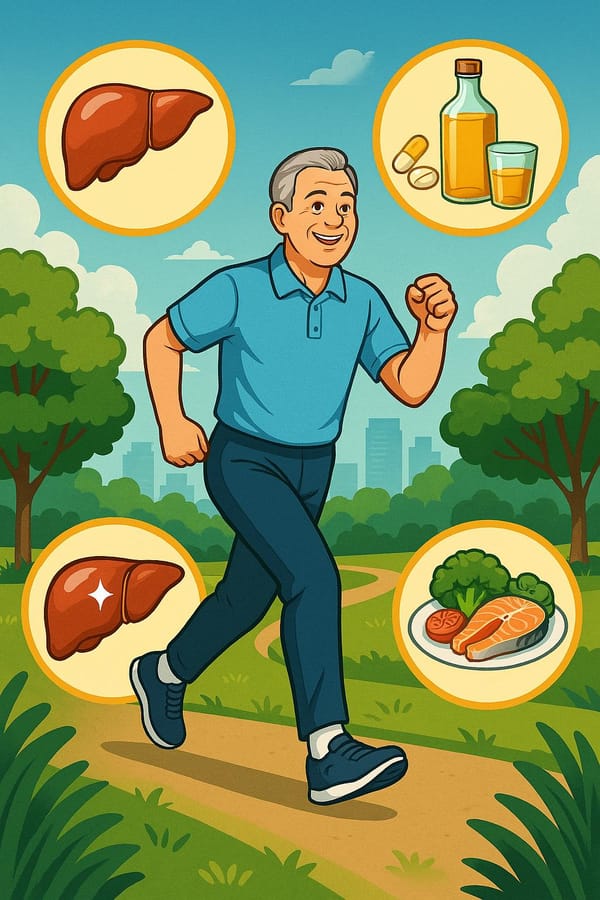Front Knee Pain in Active Adults: Causes, Treatment, and Prevention Strategies
Understand the causes, treatments, and prevention methods for anterior knee pain in active individuals. Includes warm-up tips and targeted exercises to keep your knees healthy and pain-free.

Introduction
Front knee pain is a common issue among individuals who exercise regularly, whether they are runners, cyclists, or gym enthusiasts. This discomfort often prevents people from putting full weight on the affected leg due to fear of worsening the pain. Consequently, performance during workouts declines, or individuals may have to take a break from physical activity altogether.
The causes of anterior knee pain are multifaceted and may include overuse, sports injuries, improper warm-up routines, or imbalances in surrounding muscle groups. Anatomically, the front of the knee includes the patella (kneecap) and the femur (thigh bone), both of which must function in harmony to allow smooth joint motion.
In this article, we will explore the causes, self-care methods, and effective preventive strategies for front knee pain in those who exercise regularly. We will also introduce warm-up techniques and rehabilitation exercises designed to reduce the risk of recurrence and maintain optimal knee health.
Main Content
1. Common Causes of Front Knee Pain
- Overuse
- Rapidly increasing the intensity or volume of workouts without proper progression can strain the knee joint and surrounding muscles.
- For instance, beginner runners who quickly extend their running distance may experience heightened impact forces on the knee.
- Misalignment of the Lower Limb
- Structural issues like misaligned kneecaps or flat feet can alter biomechanics and concentrate stress on the front of the knee.
- Flat feet, in particular, often lead to poor shock absorption, resulting in excess pressure on the patellofemoral joint.
- Muscle Imbalance
- Imbalances between the quadriceps (front thigh) and hamstrings (back thigh) can cause uneven tension on the patella.
- Weak hip or core muscles can also disrupt weight distribution and affect knee stability.
- Injury or Trauma
- Direct impact or twisting injuries may result in anterior knee pain.
- Professional assessment is advised to rule out ligament tears or cartilage damage.
- Improper Warm-Up or Cool-Down
- Skipping warm-up or cool-down phases can leave muscles tight and unprepared, increasing the risk of knee injuries.
Scientific Evidence:A study from the American Journal of Sports Medicine links long-distance running to anterior knee pain in novice runners Read MoreResearch in Physical Therapy in Sport found that strengthening quadriceps significantly reduces knee pain View Study
2. Initial Treatment and Self-Care
- Rest and Activity Modification
- Cease any activity that worsens the pain to allow proper recovery.
- Pushing through pain can worsen the condition and lead to chronic issues.
- Cold Compression
- Apply ice packs for 15–20 minutes every 2–3 hours to reduce inflammation and swelling.
- Anti-Inflammatory Medications
- NSAIDs like ibuprofen may help relieve pain, but prolonged use should be supervised by a healthcare provider.
- Knee Braces or Supports
- Supportive gear can help stabilize the patella and reduce joint strain during movement.
- Consult a physical therapist to choose the right support.
- Physical Therapy
- A therapist can develop a personalized recovery plan to address muscle weaknesses, flexibility, and movement patterns.
3. Prevention Tips for Front Knee Pain
- Gradual Progression
- Increase workout intensity by no more than 10% weekly to allow your body to adapt.
- Proper Footwear
- Use athletic shoes with good arch support and cushioning to reduce joint impact.
- Replace running shoes after 400–600 km or when visibly worn.
- Correct Exercise Form
- Proper alignment during squats, lunges, and other exercises helps distribute stress evenly across joints.
- Ensure knees stay in line with the toes, and avoid letting them extend past the toes.
- Strengthen Supporting Muscles
- Exercises like leg presses, leg extensions, hamstring curls, glute bridges, and core workouts (planks, side planks) enhance stability.
- Maintain Healthy Weight
- Reducing excess body weight lowers stress on the knee joint.
- Combine aerobic exercises with a balanced diet to maintain an optimal BMI.
4. Warm-Up and Strengthening Exercises
4.1 Recommended Warm-Up Techniques
- Light Cardio (5–10 minutes): Brisk walking or cycling to improve blood circulation.
- Dynamic Stretching: Leg swings, high knees, and light squats to prepare joints and muscles.
- Avoid static stretching pre-workout: Reserve static stretches for post-exercise to avoid reducing muscle performance.
4.2 Sample Exercises to Prevent Knee Pain
- Wall Sits
- Sit against a wall with knees at 90 degrees.
- Hold for 30–60 seconds; repeat 3 sets.
- Clamshells
- Lie on your side with knees bent, feet together.
- Lift the top knee while keeping feet touching. Repeat 15 reps per side for 3 sets.
- Straight Leg Raises
- Lie on your back with one leg bent and the other straight.
- Raise the straight leg to 45 degrees. Do 10–15 reps per leg, 3 sets.
- Bird Dogs
- In a tabletop position, extend opposite arm and leg. Hold for 2–3 seconds, alternate sides.
- Bridges
- Lie on your back with knees bent and feet flat. Lift your hips, hold, then lower.
- Repeat 10–15 times, 3 sets.
5. Long-Term Strategies and Cautions
- Monitor Symptoms Continuously
- Seek professional help if pain persists for more than 2–3 weeks.
- Incorporate Cross-Training
- Alternate high-impact workouts with low-impact options like swimming, yoga, or Pilates.
- Flexibility Training
- Perform static stretches for quads, calves, and hips after workouts.
- Joint Health Checkups
- Individuals over 50 or with a family history of joint issues should regularly assess joint health.
- Proper Rest and Nutrition
- Sleep and diet play vital roles in joint recovery.
- Ensure adequate protein, calcium, magnesium, and vitamin D intake.
Pro Tip: Always consult a healthcare professional before beginning a new exercise routine if you have existing knee pain or health conditions.
Conclusion
Front knee pain is common among fitness enthusiasts, especially those engaged in high-impact sports. However, it is manageable and often preventable through:
- Progressive workout planning
- Proper warm-up and cool-down routines
- Strengthening and flexibility exercises
- Good footwear choices and healthy weight maintenance
- Consistent rest and nutrition
If symptoms persist, don't hesitate to consult a specialist. With the right care and preventive strategies, you can return to your active lifestyle confidently and keep your knees healthy for years to come.
We hope this guide helps you understand and address front knee pain effectively. Share this article with friends or loved ones who may be facing similar issues, and explore our other health and fitness content tailored for adults 50+!



